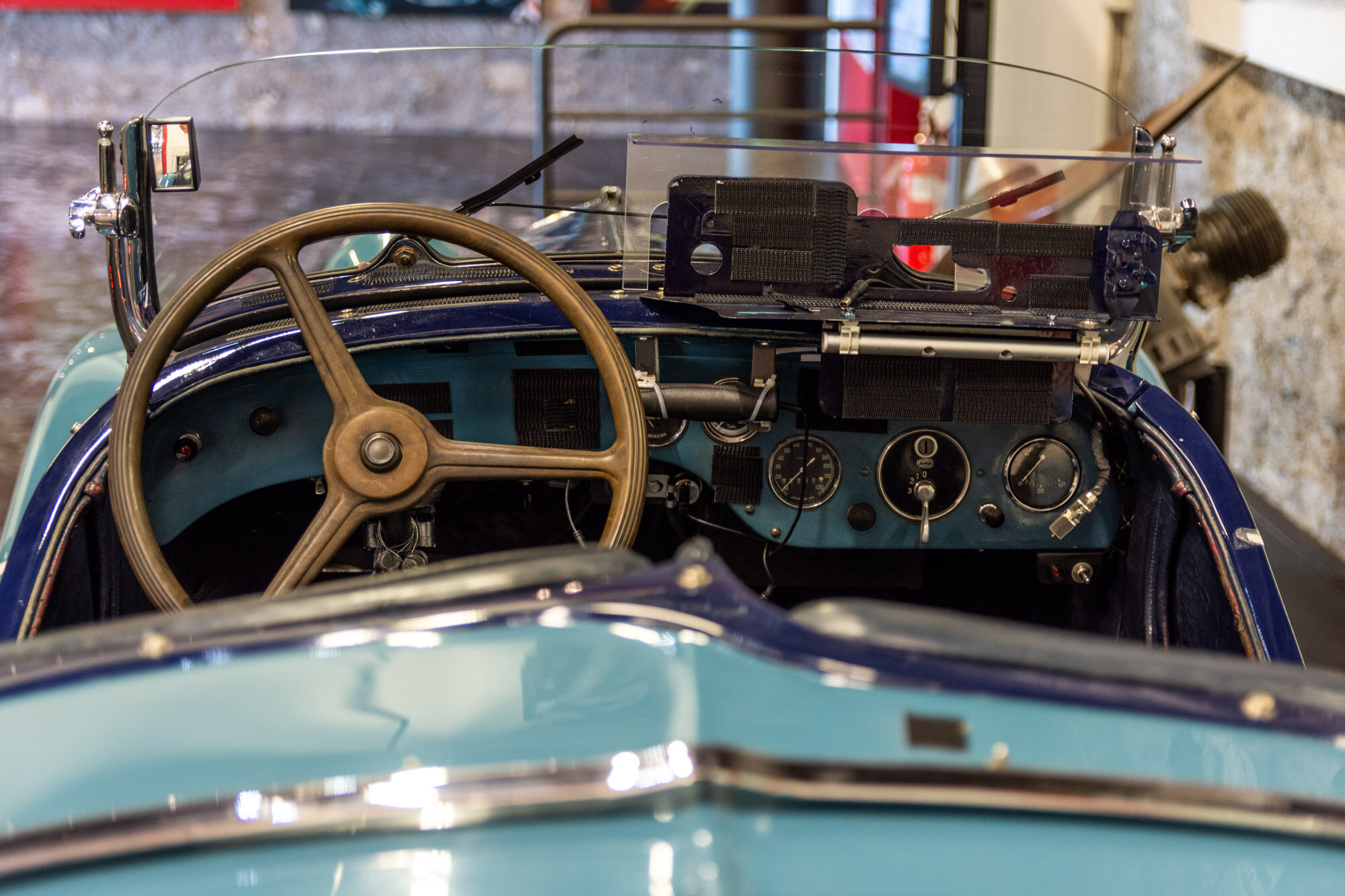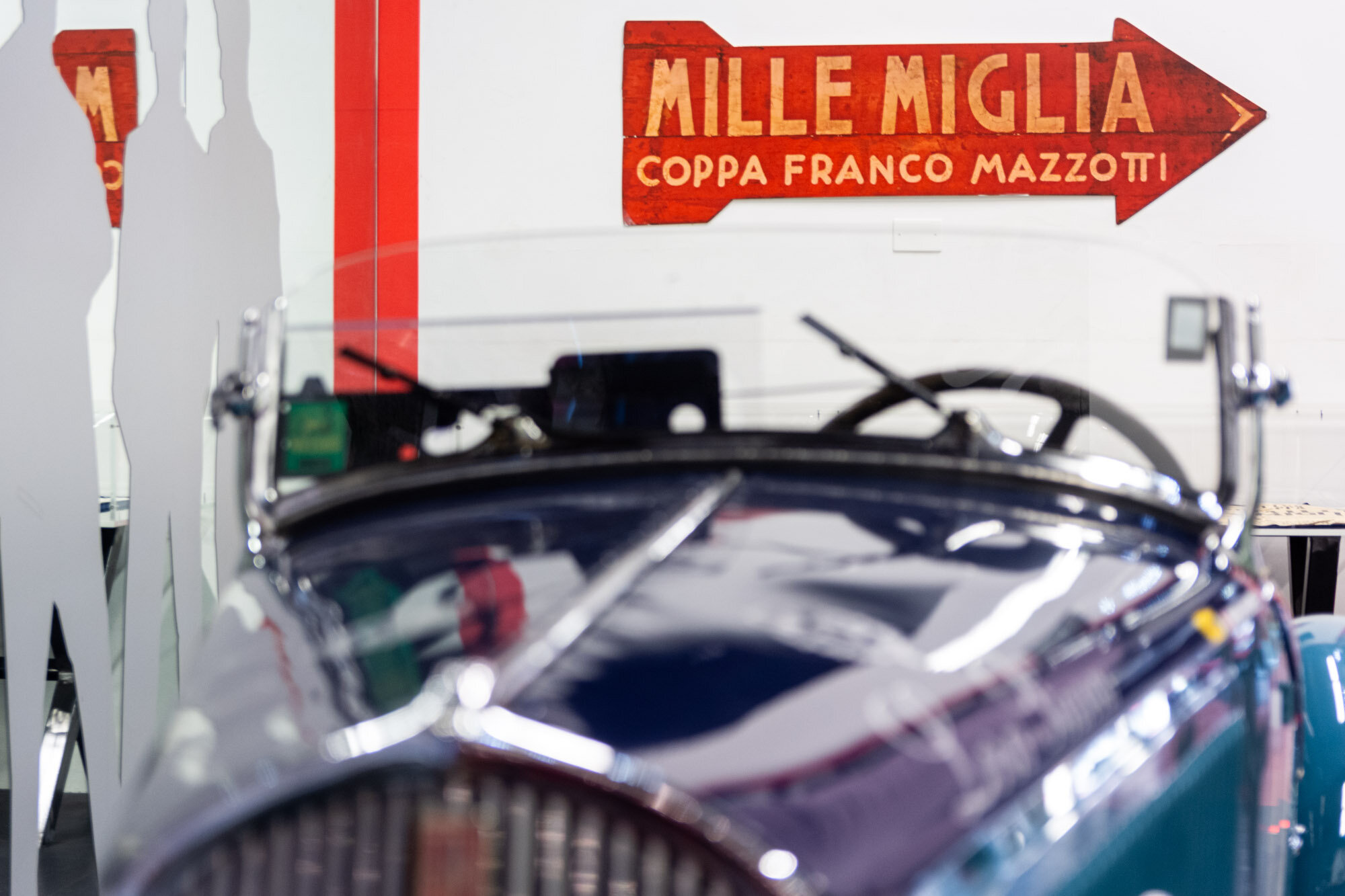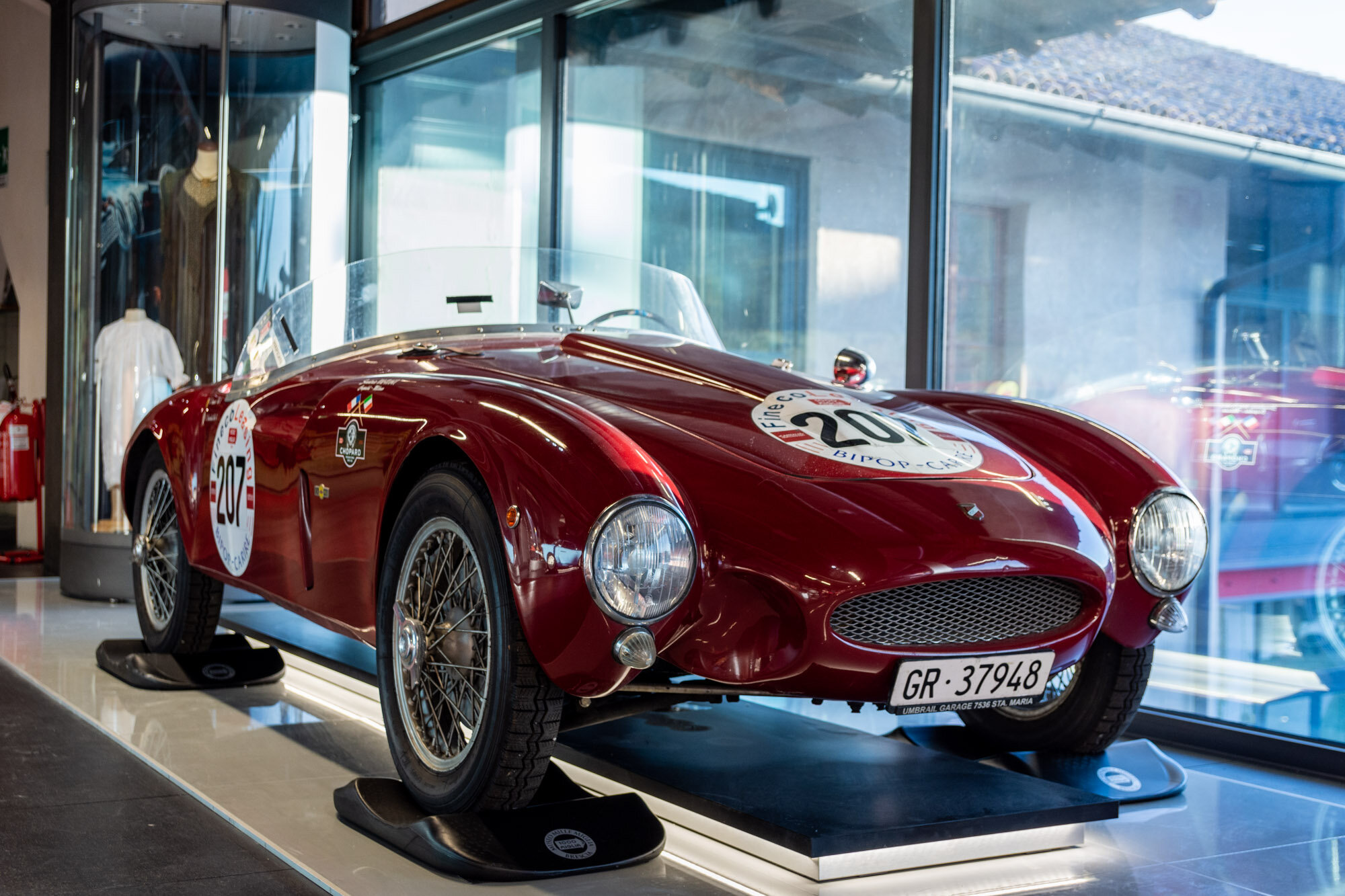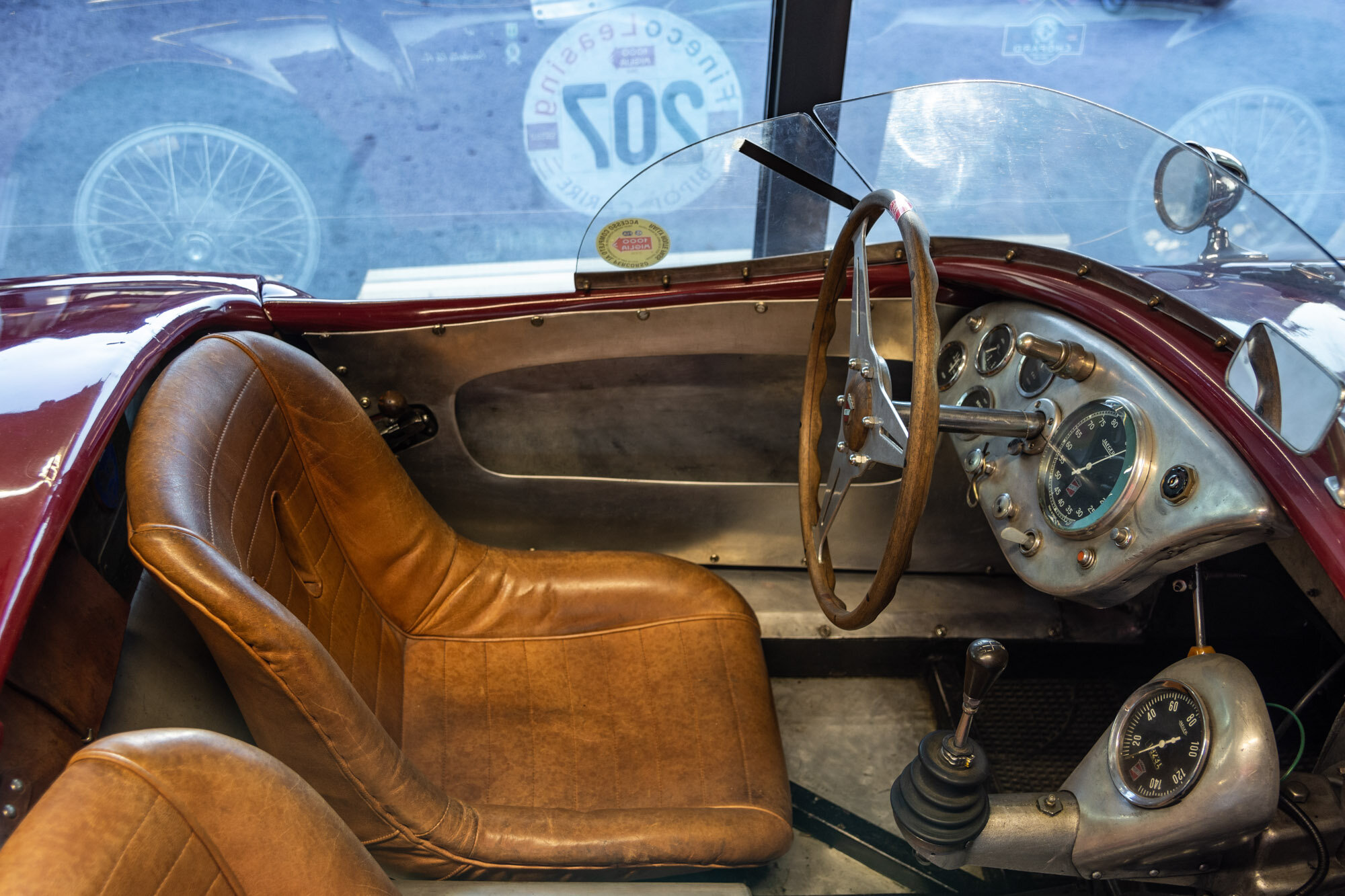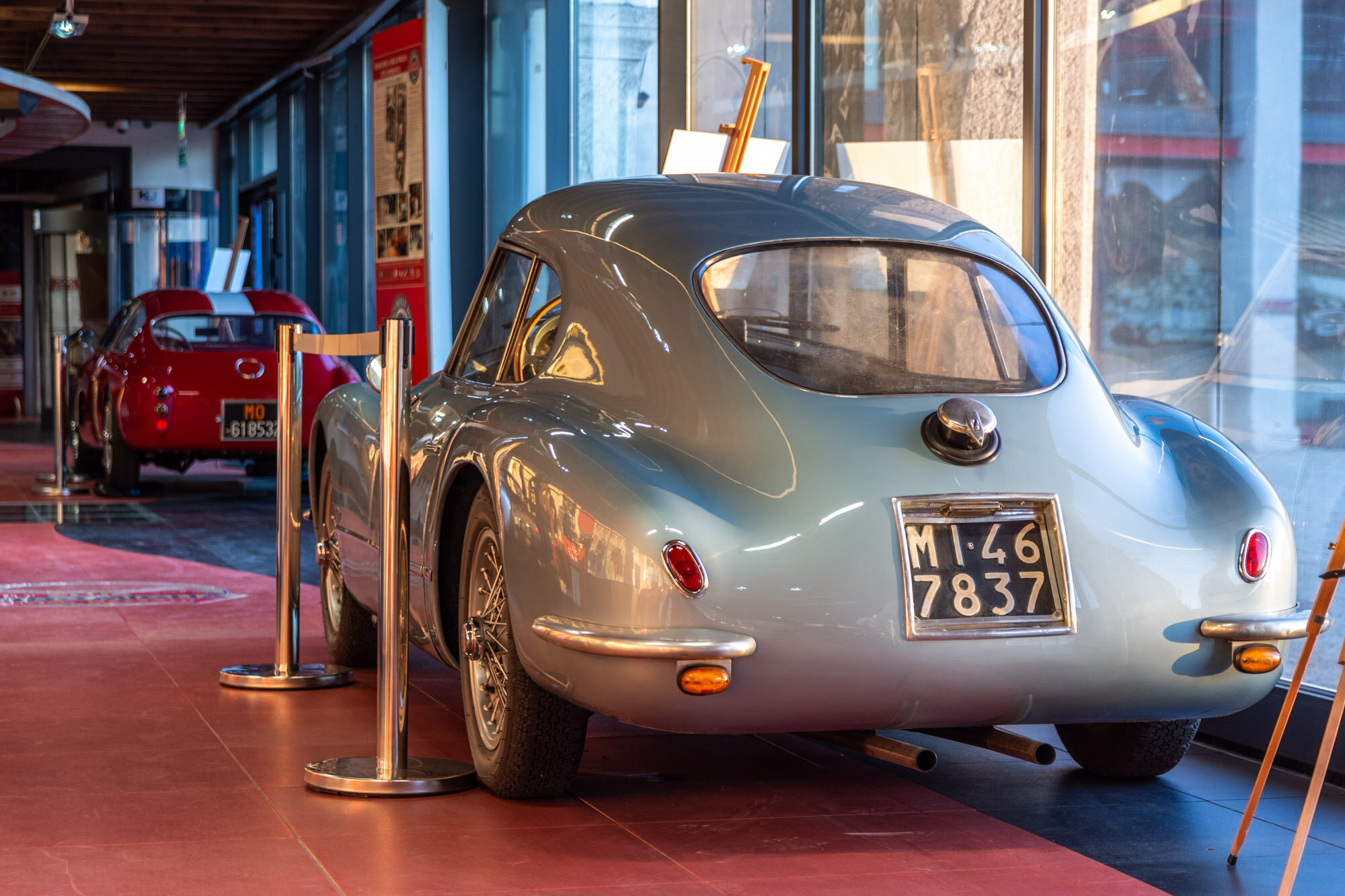Museo Mille Miglia - 90th Anniversary Exhibition
A road that is a thousand miles long… In the museum presented as a red path with road samples.
BEAUTIFUL LOMBARDIA
After an exciting day spent at Museo Storico Alfa Romeo I decided to take it easy on Sunday morning and just sightsee around Lago di Garda. Ever since I came to Italy in May this year I feel like there is something special about Northern Italy and landscapes around all these lakes. And this time again, Garda did not disappoint me at all. After a delicious breakfast I walked all the way to Sirmione, ancient city which history dates back to 6th millennium Before Christ. The peninsula, at the tip of which the city is located, cuts into the lake resulting in phenomenal panoramic view at Garda. It was mid-December but the sun was shining and everything was perfect.
The clock was ticking though, and I needed to get going to the museum which exhibition brought me here in the first place. I walked back and took my Smart for a spin to Museo Mille Miglia located on the outskirts of Brescia. I have been to Brescia before, but did not have enough time to visit the exhibition back then. When I arrived, I was shocked by the museum building itself – it was an old monastery founded by the Bishop of Brescia back in 1008. Centuries later, in 1997 Mille Miglia Association was granted the right to use it – building well suited to host museum of a race with such a great history.
A ROAD THAT IS THOUSAND MILES LONG
This time there was no special event happening so I bought the ticket myself and immediately went to explore the ‘red path’ of the race. Obviously, everyone knows about Mille Miglia, but for those who do not, let me explain a bit of its history. It was, and still is, a race established by Aymo Maggi, Franco Mazzotti, Renzo Castagneto and Giovanni Canestrini back in 1927. The idea behind was to establish a race from Brescia to Rome and back, which totalled approximately 1500km or a thousand roman miles equivalent which the race took the name after – Mille Miglia. There were twenty-four races in total, out of which thirteen happened before the war and eleven after. However, in 1957 the race was banned due to two fatal crashes – one taking the lives of the driver and co-driver plus nine spectators and the second involving just the driver. However, the race was reborn in form of a regularity race and its story continues until today.
The museum presents its story and exhibits in a very interesting way. On the floor there is a red path going all the way through the corridor, symbolizing the red arrow of ‘Coppa Franco Mazzotti’. Every now and then there is a glass, see-through part, showing different road conditions on which the drivers needed to compete. It is really unbelievable how the roads have changed between 1927 and late 1950s. On the ‘roadside’ there was a special exhibition for the ninetieth anniversary presenting cars which contested in the race throughout all editions.
LOVELY TOPOLINO
First to welcome the visitors is one of the first Fiats upgraded by Siata package – the 508 Balilla Spyder Tipo Corsa. It ran in Mille Miglia in 1934 and on the dashboard, one can see what type of racing instruments were used to navigate back in the old days. Next car which had me at hello was the AMP Special by Prete. Produced in 1947 by the Alfa-Maserati-Prete consortium it was third in Giro di Sicilia – Targa Florio race. It is totally lovely with its details such as extremely long exhaust pipe running all along the vehicle, nicely wrapped in with thermal tape.
This Topolino proves you can tackle a thousand miles’ endurance race with a Fiat 500!
Accompanied by gadgets, emblems and old gas pumps dating back to the époque there was an inconspicuous automobile which one would never think can take part in such an extreme, enduring race. Grey Fiat 500C faced Mille Miglia in 1952 and finished it, on hundred and ninety-second place, ranking hundred second in same year’s Coppa della Toscana. It only confirms that it is all about the spirit of racing and regardless of what car you drive, you can go out there and compete. Even in lovable Topolino.
A bit farther down the road there was another fantastic race car – Parisotto Fiat 750 Sport Siata. There were only nine made that year for Scuderia Patavium Team and this exhibit simply rocked it at the 1952’s Mille Miglia. Not to mention it looks simply astonishing. There was another 750 at the very end of the first story which I simply fell in love with – Moretti 750 Sport CM54 Barchetta by Motto. A dark plum colour of the body was perfectly complemented with brown leather interior among aluminium finishes of the doors, dashboard and central tunnel. Icing on that cake were wire wheels which took my breath away.
The exhibition continues on the ground floor, but before you go downstairs make sure you visit a small corner devoted to Mercedes-Benz, for they are sponsoring some of the Museum activities. When I was there I unfortunately missed one of my dream cars – the famous 300SL Gullwing, as it was being prepared for the upcoming year’s edition but there were plenty of other fantastic cars including a mint-state W111 Pagoda. Definitely worth giving it a look.
ALL THESE OTTO VUS
On the ground floor, there are possibly few of the most spectacular Fiats ever produced. Otto Vu, or simply 8V, was a coupe produced by Fiat between 1952 and 1954 in a total of hundred and fourteen pieces. Although the car was not a huge commercial success it did well in racing, hence why there were three at the Mille Miglia museum. Although I have seen probably the most astonishing 8V – Supersonic – earlier this year at Concorso d’Eleganza, the bodyworks in front of me were also impressive. The lower level’s path starts with 1955 Fiat 8V which body was manufactured by Zagato. Only six of this type were made with characteristic double-bubble roof crowning the Mille Miglia and Targa Florio contestant. On the other side of the road, there is another Zagato bodywork from 1953, the third pre-production model which ran the Mille Miglia twice. Eventually, there was the last one, my day-favourite car – the 8V by Fiat Reparto Carrozzerie Speciali. Fantastic colour, extravagant grillage and wire wheels complemented the perfect body geometry and artworks around it made the exhibit simply special. Well done, Fiat… What a way to wrap up the exhibition!
Before leaving I took few minutes to watch videos telling stories of some of the Mille Miglia editions and their winners. Some of them were in Italian which just strengthened my resolution to eventually learn this language… Surprisingly, right after you leave the regular exhibition there is a room devoted to The Beatles, with LPs, gadgets and posters all around. God knows why it is here, but it is a good and enjoyable collection. I bought a Mille Miglia arrow sticker for my fridge and was ready to go.
CI VEDIAMO PRESTO, ITALIA!
I drove to the city centre of Brescia for dinner and reminded myself how beautiful the old town here is. I ate a delicious bresaola pizza at pizzeria ll Vicolo Corto Di Fabbrocino Raffaele – a family business with fantastic atmosphere and pizza oven decorated with mosaic. After a short walk I drove all the way to Bergamo and boarded a small bed-cabin at the airport. Getting ready for my early morning flight back to Copenhagen I was already planning my next trip to Italy.
Text & Photos: Adam Pekala ©


